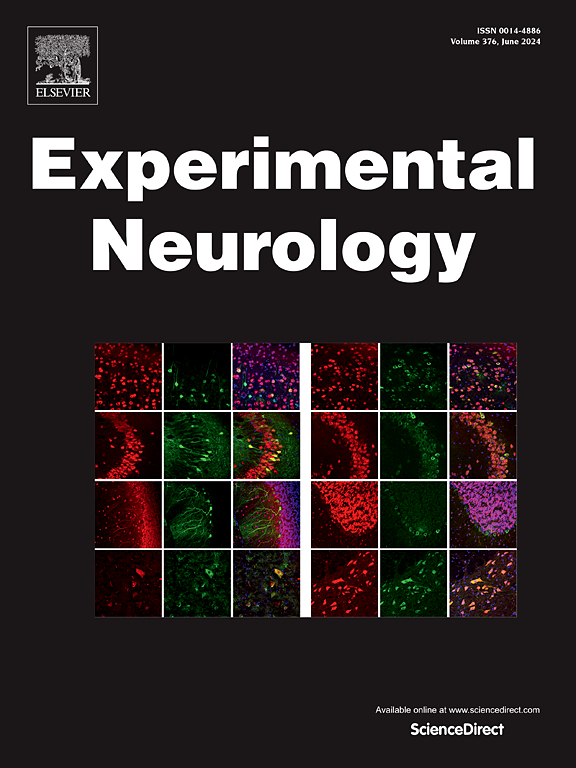Atlas of temporal molecular pathological alterations after traumatic brain injury based on RNA-Seq
IF 4.6
2区 医学
Q1 NEUROSCIENCES
引用次数: 0
Abstract
Traumatic brain injury (TBI) involves diverse molecular pathological alterations and biological processes in a temporally dynamic manner. However, current knowledge on the various processes during the acute phase of TBI is still rather limited. RNA-seq analysis was performed on brain tissues from C57/BL6 mice at 10 time points(0 h, 1 h, 2 h, 3 h, 4 h, 6 h, 12 h, 1d, 3d, and 7d) following TBI modeling. Subsequently, a bioinformatics approach, Weighted Gene Co-expression Network Analysis (WGCNA), was employed to identify characteristic modules, which were then validated using the Mfuzz method. Pathway enrichment analysis was conducted on WGCNA module genes, and hub genes were screened using the STRING database. After exploring the various potential pathways and expression patterns (neuroinflammation, cognition, gliosis and myelin regeneration etc.), we focus on pyroptosis, a inflammatory cell death influencing immune response, for in-depth analysis. RT-qPCR, Western blot(WB) and Immunofluorescence(IF) were used to validate the hub genes and key pyroptosis-related genes(Casp1, Casp11, GSDMD). Additionally, single-cell RNA sequencing data at 7 day post injury(dpi) was also used to validate the expression of the identified hub genes. Our approach to intensive transcriptomic analysis comprehensively reveals the temporal molecular pathological alterations during TBI progression. Pyroptosis may be a key mechanism in the neuroinflammatory process. Intervention strategies targeting specific molecular pathways may offer novel approach for the treatment of TBI.
基于RNA-Seq的外伤性脑损伤后颞叶分子病理改变图谱
外伤性脑损伤(TBI)涉及多种分子病理改变和生物学过程,具有时间动态性。然而,目前对创伤性脑损伤急性期的各种过程的了解仍然相当有限。在TBI建模后10个时间点(0小时、1小时、2小时、3小时、4小时、6小时、12小时、1d、3d和7d)对C57/BL6小鼠脑组织进行RNA-seq分析。随后,采用生物信息学方法加权基因共表达网络分析(WGCNA)来识别特征模块,然后使用Mfuzz方法对其进行验证。对WGCNA模块基因进行Pathway富集分析,利用STRING数据库筛选枢纽基因。在探索了各种潜在的途径和表达模式(神经炎症、认知、胶质瘤和髓鞘再生等)之后,我们将重点关注焦亡,一种影响免疫反应的炎症细胞死亡,进行深入分析。采用RT-qPCR、Western blot(WB)和Immunofluorescence(IF)对中心基因和关键的焦热相关基因(Casp1、Casp11、GSDMD)进行验证。此外,还使用损伤后7天(dpi)的单细胞RNA测序数据来验证鉴定的枢纽基因的表达。我们的方法密集转录组学分析全面揭示时间分子病理改变在TBI进展。焦亡可能是神经炎症过程中的一个关键机制。针对特定分子通路的干预策略可能为创伤性脑损伤的治疗提供新的途径。
本文章由计算机程序翻译,如有差异,请以英文原文为准。
求助全文
约1分钟内获得全文
求助全文
来源期刊

Experimental Neurology
医学-神经科学
CiteScore
10.10
自引率
3.80%
发文量
258
审稿时长
42 days
期刊介绍:
Experimental Neurology, a Journal of Neuroscience Research, publishes original research in neuroscience with a particular emphasis on novel findings in neural development, regeneration, plasticity and transplantation. The journal has focused on research concerning basic mechanisms underlying neurological disorders.
 求助内容:
求助内容: 应助结果提醒方式:
应助结果提醒方式:


